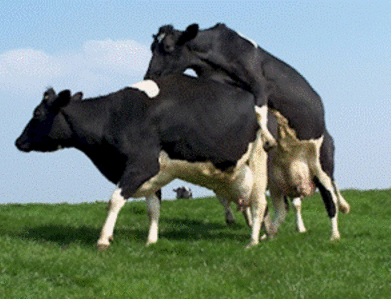Heat Detection
Achieving high submission rates is a key driver of dairy farm profitability, making accurate heat detection one of the most important functions on the farm.
Ideally mating and heat detection should be at the forefront of your mind come the beginning for September for spring calving herds and by the end of June for Autumn calvers. Planning and preparation is everything when it comes to a successful mating and nobody hits a 90% 3 week submission rate by accident! Make sure your whole team is up to speed with the methods being employed and importantly for newer team members, make sure everyone can spot the signs of oestrus.
Signs of heat (oestrus)
A non-pregnant cow should come on heat every 18-24 days with the average cycle being 21 days. Cows in heat may display any of the following behaviours:
- restless with increased activity
- gathering in small groups (this is the sexually active group)
- standing to be mounted - the mounted cow is in true standing oestrus
- mounting other cows
- rub marks/ missing tail paint
- increased vocalisation
- drop in milk yield/reduced milk let down
- mucus/bulling string

Heat detection aids
Observation
Observation in the paddock is still one of the best methods of heat detection. Allow time to go to the paddock at least twice a day. The best time is after the cows have had a feed – late morning, early evening.
Collars & Tags
The new stuff! This new tech is rapidly being rolled out on many farms usually with good success. Like anything though it takes time to adjust to a new way of doing things and like all technology it is only as good as the users and data captured!
When using the collars or tags these need to be in place a while before PSM. This is because in order to capture credible 'heat' data the system needs to work out what is 'normal' for each cow and create a baseline from which it can then track any changes. Clearly if you implement the technology just before mating, the system won't have had time to create this baseline and thus errors can be made. SO if you are new to the technology it is a good idea to employ some back up heat detection aids in the first year to make sure it is working as you would expect.
Tail Paint
The simplest method is to tail paint the herd at least 3 weeks prior to the start of mating. We would also recommend that you record the numbers of the cows bulling each day, as this makes it easier to confirm returns to heat based on the cycle of the cow.

Kamars/Scratchies
Kamars are triggered by pressure and may be better for younger cows that have light heats and don’t stand for long periods. Like tail paint they need to be refreshed
Other
Big herds could consider using vasectomised bulls as heat detectors in conjunction with tail paint or heat detection devices.
Synchrony Programmes
Useful for heifers, non cycling cows and in large herds who maybe want to bring the best cows forward to the start of mating to ensure replacements are bred from the top cows. These programmes work to manipulate the cows normal cycle so that time of oestrus (heat) can be predetermined and can be developed to suit your farm and AI timetable